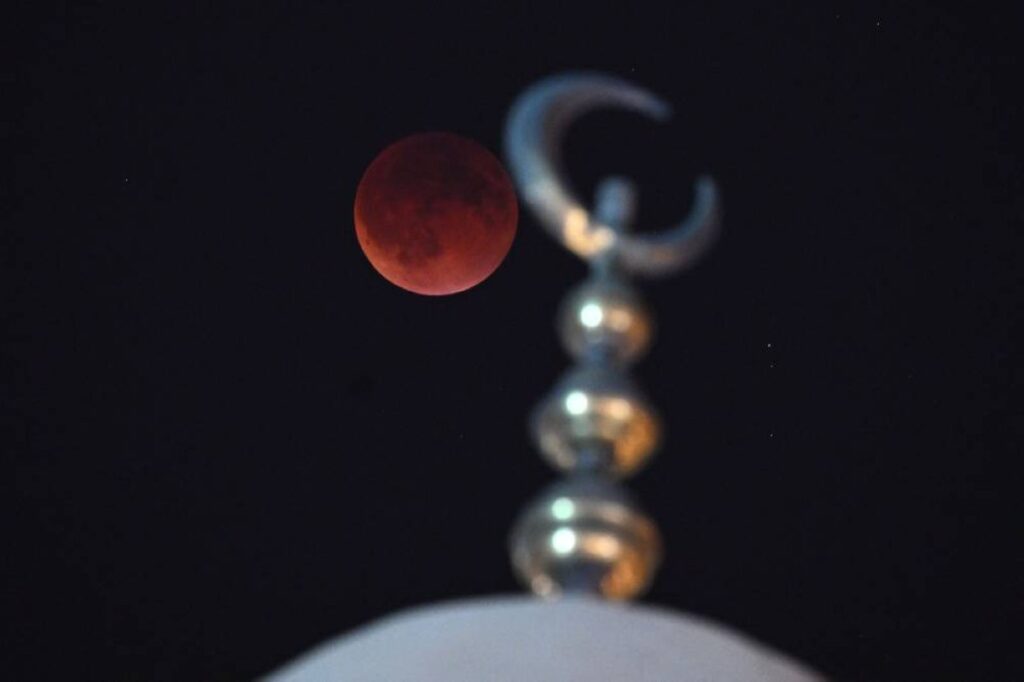By Shakir Reshamwala & Passant Hisham
KUWAIT: Stargazers in Kuwait witnessed a rare total lunar eclipse on Sunday, during which the full Moon glowed a striking copper-red, popularly known as a “Blood Moon”, as khusuf (eclipse) prayers were held in mosques across Kuwait, following Islamic tradition during such phenomena.
The celestial event began at 6:28 pm when the Earth’s faint shadow first touched the lunar surface, with the umbral phase starting around 7:27 pm. By 8:30 pm, the Moon was fully engulfed in Earth’s shadow, marking the beginning of totality. At its peak at 9:11 pm, the Moon shone deep red, a dramatic effect caused by sunlight bending through Earth’s atmosphere. Totality lasted for 82 minutes, making this one of the longest lunar eclipses in recent years. The event ended at 11:55 pm.
The Al-Ujairi Scientific Center had encouraged residents to view the eclipse from Kuwait’s open spaces and coastal areas, noting that it would be visible in its entirety across the country. No protective equipment was needed, although telescopes and binoculars enhanced the experience for enthusiasts. Globally, the eclipse was visible across much of Asia, Africa, Europe and Australia, reaching nearly 80 percent of the world’s population.

KUWAIT: People follow the phases of the full moon lunar eclipse, also known as “Blood Moon”, on Sept 7, 2025. — Photos by Yasser Al-Zayyat
Khalid Al-Jamaan, astronomer and representative of Sheikh Abdullah Al-Salem Cultural Centre, highlighted the uniqueness of the spectacle. “This eclipse exceeded the one we saw in 2018 in both duration and clarity. The skies were remarkably clear, temperatures moderate, and the conditions perfect for observation,” he said.
Al-Jamaan stressed the need to correct lingering misconceptions. “A lunar eclipse is not a bad omen. It does not harm people’s health, nor does it affect the weather or climate. It is a completely safe astronomical event,” he explained. He added that the reddish glow seen on the Moon is purely natural. “The Moon does not change color. The red and copper tones are caused by sunlight scattering through Earth’s atmosphere, filtering out blue light and leaving behind warm hues.”
According to Al-Jamaan, eclipses also provide valuable opportunities for science. “Events like tonight’s help us verify the accuracy of astronomical calculations. The fact that the eclipse unfolded exactly as predicted is a powerful confirmation of the precision of modern science,” he noted. He added that the next total lunar eclipse visible from Kuwait is expected in 2028.

